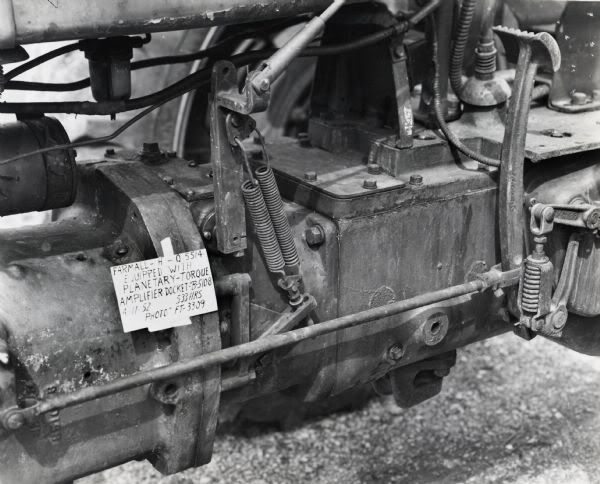Farmall 706 Grump
New User
Were the Super HTA's an original factaory manufactured tractor? How many were made?
(quoted from post at 12:09:59 03/27/12) Rumor is the factory had a coupleof experimental models, but they did not get to production with the TA in that series until the 300. No doubt any experimental models were just for testing for the 300 series.

(quoted from post at 14:18:36 03/27/12) That is the picture of a H brake system
(quoted from post at 16:15:35 03/27/12)
But it is not a SHTA. Only a HTA. It was disassembled for inspection and never reassembled. There were two.
(quoted from post at 21:32:04 03/27/12)(quoted from post at 16:15:35 03/27/12)
But it is not a SHTA. Only a HTA. It was disassembled for inspection and never reassembled. There were two.
I have to half disagree with that statement. Just because it doesn't have disc brakes doesn't make it a plain jane H. You have no idea what gears it was running or how many cubes it was running. It was experimental so all bets are off. IH did a lot of work hidding their research. They wouldn't put SH decals on it if they weren't into production yet.
Do you reckon the reason they DID NOT build the H TA was beacause they were trying to "up" the sales of the M??? Building an M TA would help to make the M MORE appealing?? According to sales records,I know the H was a HUGE seller,out selling the M series.
The TA lever may not have looked like the lever in the final design... same goes for the housing, although it would have had to have some kind of enclosure. When we started out with hydrostatic transmissions, they were sometimes just in a rectangular welded up housing with just the internals being similar.(quoted from post at 18:34:14 03/28/12) Nah, if you look 3-4 pages inside there's a bigger, better picture of the same tractor and there's no TA lever. There was no room for the TA until they figured out how to get the live hydraulic pump mounted on the distributor drive on the engine....and then they had to re-design and stretch the clutch housing to get it in.
I have never read anything on how and when exactly they developed the TA though...it would make for interesting reading I would think.
We sell tractor parts! We have the parts you need to repair your tractor - the right parts. Our low prices and years of research make us your best choice when you need parts. Shop Online Today.
Copyright © 1997-2024 Yesterday's Tractor Co.
All Rights Reserved. Reproduction of any part of this website, including design and content, without written permission is strictly prohibited. Trade Marks and Trade Names contained and used in this Website are those of others, and are used in this Website in a descriptive sense to refer to the products of others. Use of this Web site constitutes acceptance of our User Agreement and Privacy Policy TRADEMARK DISCLAIMER: Tradenames and Trademarks referred to within Yesterday's Tractor Co. products and within the Yesterday's Tractor Co. websites are the property of their respective trademark holders. None of these trademark holders are affiliated with Yesterday's Tractor Co., our products, or our website nor are we sponsored by them. John Deere and its logos are the registered trademarks of the John Deere Corporation. Agco, Agco Allis, White, Massey Ferguson and their logos are the registered trademarks of AGCO Corporation. Case, Case-IH, Farmall, International Harvester, New Holland and their logos are registered trademarks of CNH Global N.V.
Yesterday's Tractors - Antique Tractor Headquarters
Website Accessibility Policy
